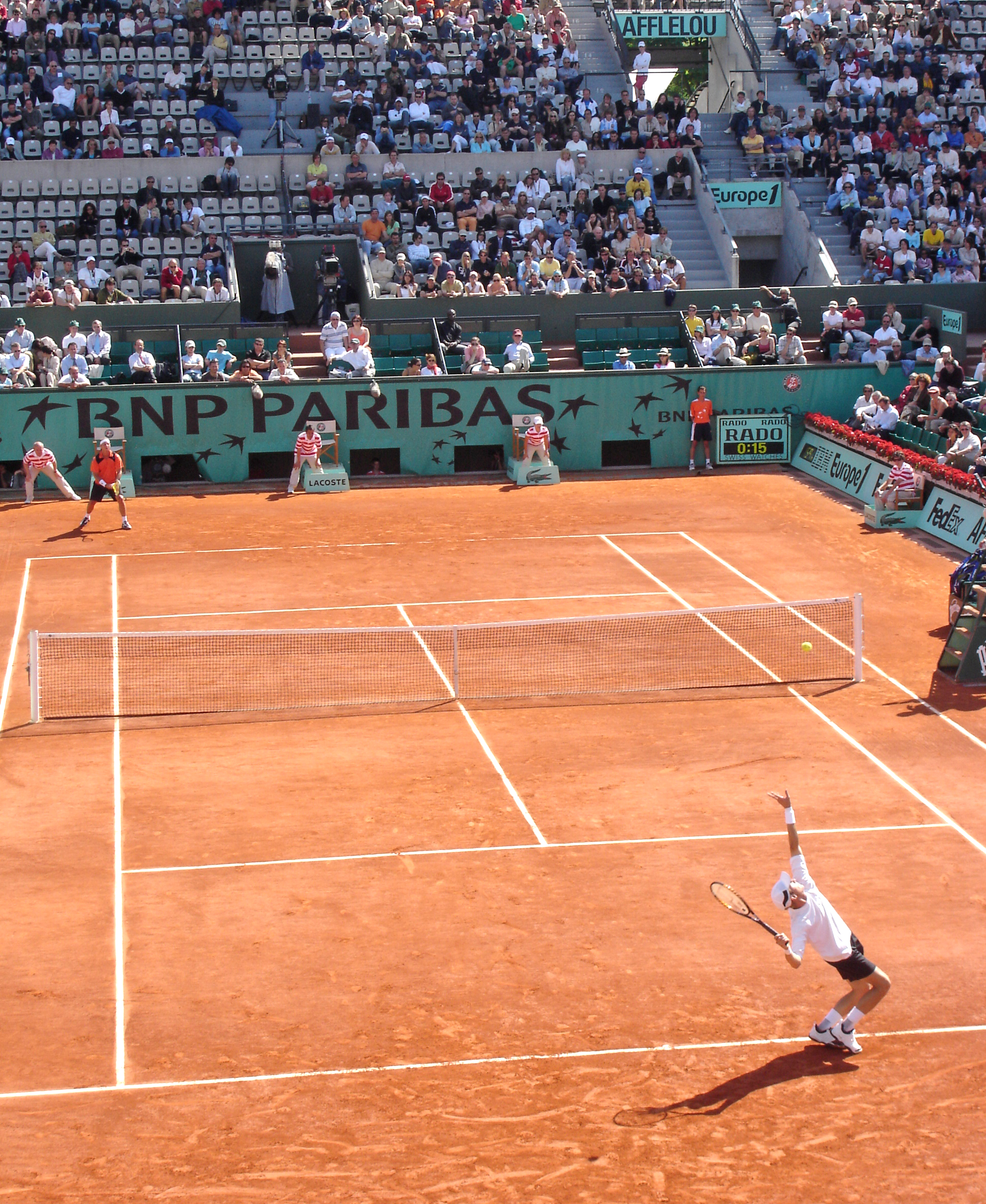|
1929 French Championships (tennis)
The 1929 French Championships (now known as the French Open) was a tennis tournament that took place on the outdoor clay courts at the Stade Roland-Garros in Paris, France. The tournament ran from 20 May until 3 June. It was the 34th staging of the French Championships and the second Grand Slam tournament of the year. René Lacoste and Helen Wills Moody won the singles titles. It was Lacoste's seventh and last Grand Slam singles title. Finals Men's singles René Lacoste (FRA) defeated Jean Borotra (FRA) 6–3, 2–6, 6–0, 2–6, 8–6 Women's singles Helen Wills Moody (USA) defeated Simonne Mathieu (FRA) 6–3, 6–4 Men's doubles René Lacoste (FRA) / Jean Borotra (FRA) defeated Henri Cochet (FRA) / Jacques Brugnon (FRA) 6–3, 3–6, 6–3, 3–6, 8–6 Women's doubles Lilí Álvarez (ESP) / Kea Bouman (NED) defeated Bobbie Heine (RSA) / Alida Neave (RSA) 7–5, 6–3 Mixed doubles Eileen Bennett Whittingstall (GBR) / Henri Cochet (FRA) defeated Helen W ... [...More Info...] [...Related Items...] OR: [Wikipedia] [Google] [Baidu] |
Clay Court
A clay court is one of the types of tennis court on which the sport of tennis, originally known as "lawn tennis", is played. Clay courts are made of crushed stone, brick, shale, or other unbound mineral aggregate depending on the tournament. The French Open uses clay courts, the only Grand Slam tournament to do so. Clay courts are more common in Continental Europe and Latin America than in North America, Asia-Pacific or Britain. Two main types exist: red clay, the more common variety, and green clay, also known as "rubico", which is a harder surface. Although less expensive to construct than other types of tennis courts, the maintenance costs of clay are high as the surface must be rolled to preserve flatness. Play Clay courts are considered "slow" because the balls bounce relatively high and lose much of their initial speed when contacting the surface, making it more difficult for a player to deliver an unreturnable shot. Points are usually longer as there are fewer winners ... [...More Info...] [...Related Items...] OR: [Wikipedia] [Google] [Baidu] |
French Championships (tennis)
The French Open (french: Internationaux de France de tennis), also known as Roland-Garros (), is a major tennis tournament held over two weeks at the Stade Roland Garros in Paris, France, beginning in late May each year. The tournament and venue are named after the French aviator Roland Garros. The French Open is the premier clay court championship in the world and the only Grand Slam tournament currently held on this surface. It is chronologically the second of the four annual Grand Slam tournaments, occurring after the Australian Open and before Wimbledon and the US Open. Until 1975, the French Open was the only major tournament not played on grass. Between the seven rounds needed for a championship, the clay surface characteristics (slower pace, higher bounce), and the best-of-five-set men's singles matches, the French Open is widely regarded as the most physically demanding tennis tournament in the world. History Officially named in French ''les Internationaux de Franc ... [...More Info...] [...Related Items...] OR: [Wikipedia] [Google] [Baidu] |
June 1929 Sports Events
June is the sixth month of the year in the Julian and Gregorian calendars and is the second of four months to have a length of 30 days, and the third of five months to have a length of less than 31 days. June contains the summer solstice in the Northern Hemisphere, the day with the most daylight hours, and the winter solstice in the Southern Hemisphere, the day with the fewest daylight hours (excluding polar regions in both cases). June in the Northern Hemisphere is the seasonal equivalent to December in the Southern Hemisphere and vice versa. In the Northern Hemisphere, the beginning of the traditional astronomical summer is 21 June (meteorological summer begins on 1 June). In the Southern Hemisphere, meteorological winter begins on 1 June. At the start of June, the sun rises in the constellation of Taurus; at the end of June, the sun rises in the constellation of Gemini. However, due to the precession of the equinoxes, June begins with the sun in the astrological sign of Ge ... [...More Info...] [...Related Items...] OR: [Wikipedia] [Google] [Baidu] |


.jpg)